THE FIRST BUCK I saw after passing through the gates at RW Trophy Ranch was a stunner. A pair of drop tines hung off his massive main beams, and I could tell right away that Ma Nature couldn’t take all the credit for this one.
Like a thoroughbred with antlers, this pedigreed buck was the byproduct of generations of selective breeding and genetic tinkering. His creator, as it were, drove the silver GMC pickup that I followed down the long driveway. The paved road took us past an old two-story manor, around a man-made pond covered in wood ducks, and up to the converted barn that serves as ranch headquarters. As soon as we parked, Robert Williams stepped out of the cab and lifted his hands in the air, motioning at everything around him.
“You see all this?” he asked, knowing full well that I’d leaned out my own window to gawk at the huge buck. “This is what Parks and Wildlife wants to destroy.”
As a hunter who grew up in Texas, I can certainly appreciate what Williams has built here. From the manicured food plots to the stands of native post oak, this prime piece of land contains some of the best wildlife habitat within an hour’s drive of Dallas. Even if the resident deer could leave the property, I’m not sure they’d want to.
At the heart of the high-fenced 1,500-acre ranch lies 68 acres of chain-link deer-breeding pens. These pens are also at the root of an ongoing legal standoff between Williams and the state of Texas. The 83-year-old deer breeder’s fight to maintain control of his herd began nearly three years ago, when one of his does tested positive for chronic wasting disease, the fatal neurological condition that affects deer, elk, moose, and other cervids.
The Texas Parks and Wildlife Department responded to this case of CWD the same way it has at other deer farms across the state: Officials ordered Williams to quarantine his herd and let him know they would be euthanizing every one of his roughly 500 deer in an attempt to contain the disease.
Williams refused. The state insisted. So, in early 2022, Williams sued TPWD along with the Texas Animal Health Commission, which has traditionally regulated livestock but now oversees captive deer herd depopulations along with TPWD’s wildlife division. In doing so, he became the first breeder in Texas to prevent the state from depopulating his herd due to the presence of CWD. This has been the agency’s main containment strategy since 2015, when the first whitetail in Texas to test positive for the disease was confirmed at a breeding facility in Medina County. That herd was depopulated, and in the time since, TPWD has euthanized at least 2,598 deer from these facilities, according to an agency spokesperson.
Williams’ suit against TPWD is now awaiting a decision in the state Supreme Court. Even though it’s dragged on longer than he thought possible, he’s not about to stand down anytime soon.
The Evolution of the Texas Deer-Breeding Industry
Williams is the first to admit that he’s a hardheaded man. He’s also one of the founding fathers of the Texas deer-breeding industry. As the oldest (and one of the longest operating) breeders in the state, he’s been selectively breeding whitetails since well before 1995, when the Texas Parks and Wildlife Code was amended to specifically allow the practice. (The code dictates that pen-raised whitetails are not classified as livestock in Texas. Instead, they’re treated as a state-owned natural resource that’s used by breeders until the deer are released from a pen—at which point they can never be brought back inside.)

Williams started with a $10 breeder’s license, a $250 yearling buck named Bambi, and a dream to grow huge deer on a small ranch in Sunnyvale, which has since been swallowed by the suburbs of Dallas. Borrowing the same selective breeding techniques used by cattle ranchers and racehorse breeders, Williams built a line of massive bucks over the years. He eventually moved to the property outside of Terrell, where Bambi’s genetics were passed on to bucks with familial names like Bambi Double Drop, Bambi Crackerjack, Bambi Winchester, and so on. The bigger property allowed him to grow these brood bucks and sell them to other breeders and high-fence outfitters, while also turning some loose on his own ranch for paying hunters.
In the decades since Williams got his start, the industry—much like the deer it spawns—has grown into a colossal version of its former self. Hundreds of ranchers across the state have followed Williams’ lead, even though the barrier to entry has grown significantly. Pedigreed breeder bucks can now fetch upwards of $100,000 at auction, and some ranchers will pay up to $5,000 for a vial of semen from one of these bucks.
For better or worse, these innovations changed the face of Texas hunting culture and ushered in a new era of deer management. The state now has a national reputation as the place to go if you’re willing to pay thousands to shoot a bona fide giant behind an 8-foot fence.
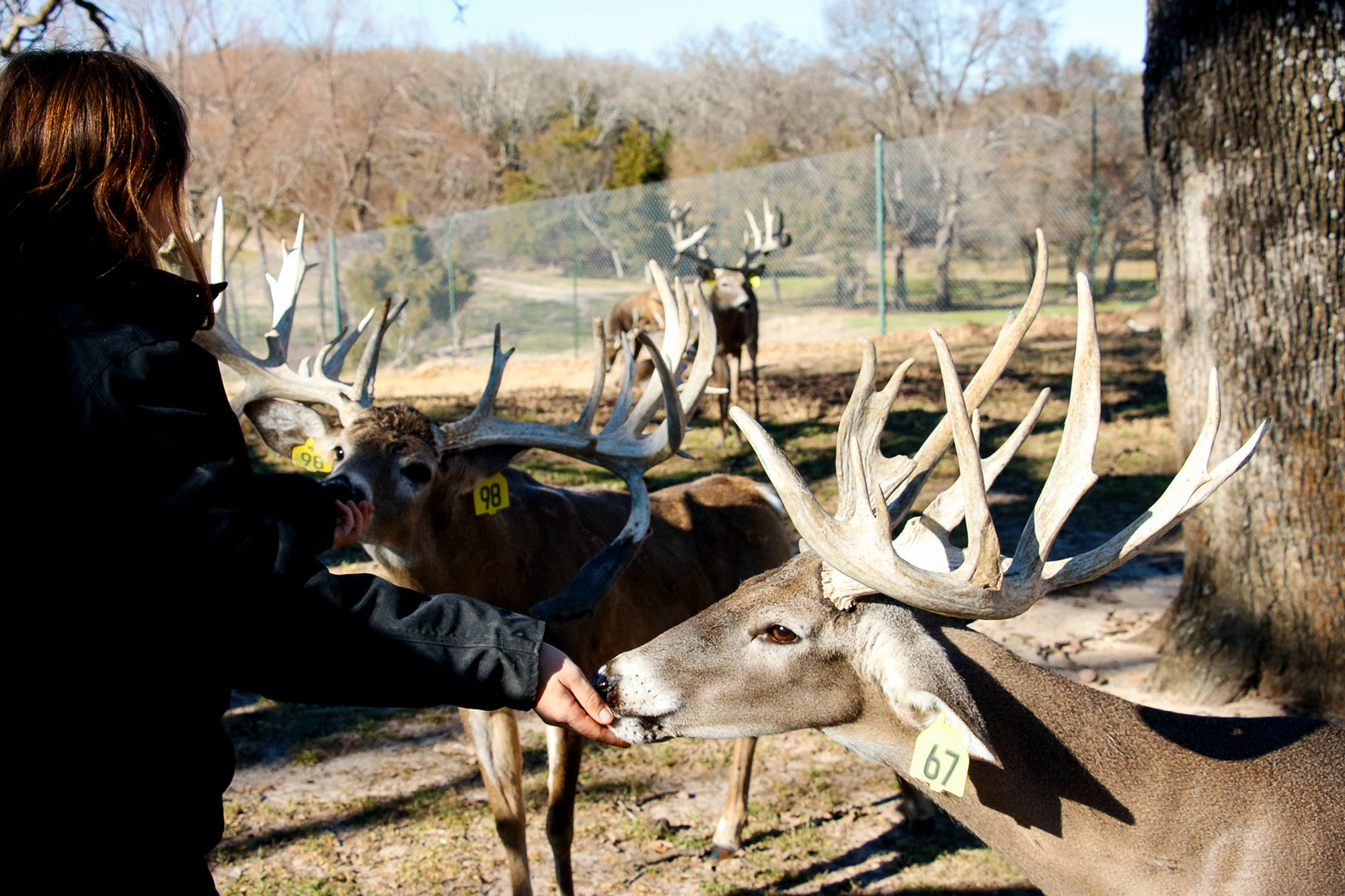
And business was booming for Williams, until March 2021, when he and his daughter Maree Lou, who manages the ranch’s breeding operation, found three dead deer in one of their breeding pens. They did a routine exam of the doe and two bucks and determined all three had pneumonia. As required by the state, they also sent the brains and lymph nodes to a lab at Texas A&M. The doe tested positive for CWD.
Williams didn’t believe it at first, and he still claims the positive test result was a mistake or a mix-up with another breeder. He contacted TPWD and asked if he could get the test results and the doe’s DNA verified by an independent lab in Nebraska. TPWD wouldn’t allow it.
Read Next: The Deer Plague: An Inside Look at the Fight to Stop Chronic Wasting Disease
“I said, ‘I will never believe it’s my deer unless you let me send that brain and lymph node to Gene Seek,’” says Williams, referring to the Nebraska lab. “[TPWD] would not do it, and that was the first red flag. ‘If you’re so sure it’s my deer, why are you scared to let me find out?’”
RW Trophy Ranch followed up by live testing every deer that had shared a pen with the doe that was supposedly CWD-positive. Four of the samples came back positive, and those deer were euthanized. The other 49 tests resulted in no detection of CWD. (Live testing for CWD is improving, but experts agree that it still isn’t as good as a postmortem test at detecting the disease—especially in the early stages.) TPWD still wouldn’t allow Williams to verify the test results, and they sent him a five-year herd plan that summer.
In addition to requiring the depopulation of his entire pen-raised herd, the state-sanctioned herd plan included several restrictions on the surrounding 1,500-acre “release site” that Williams says were onerous and would have effectively given control of his operation to TPWD. So, he turned it down.
“They wanted to kill every deer in my pen, and they wanted me to pay for the killing—hotels, bullets, overtime, everything,” Williams explains. “I said, ‘I don’t plan on killing ’em, and I will not give you a red dime.’”

After multiple court-ordered delays, a convoy of TPWD wildlife officers and TAHC veterinarians arrived in the nearby town of Terrell on April 14, 2022, suppressed rifles in tow. They planned to start the depopulation of Williams’ herd the following night but were thwarted by an emergency restraining order granted that day by a judge in Kaufman County.
The lawsuit that Williams and his attorney, Jennifer Riggs, filed is now awaiting a decision from the Texas Supreme Court. Riggs did not respond to requests for comment on the lawsuit, which challenges TPWD on procedural grounds and argues that the state is greatly exceeding its authority because it cannot prove that CWD is a legitimate threat to Texas’ wild deer and human populations.
In the meantime, the number of CWD cases at RW Trophy Ranch has continued to grow: As of February 2023, 61 of Williams’ whitetails have tested positive for the disease, says TPWD. But the way Williams sees it, the only number that really matters is zero. He says that out of all those positive cases, not one deer has actually died from CWD. (Several of those deer had epizootic hemorrhagic disease, Williams says, and he still considers the first doe that tested positive to have died from pneumonia.)
Taking it one step further, Williams doesn’t believe Texas can truthfully point to a single case in which a whitetail or mule deer—free-range or pen-raised—died from CWD. He chalks it up to a “political disease” and feels that some ranches are being targeted while others have been overlooked. (As proof, he points to the breeders in Limestone and Gillespie Counties who, after coming to Williams’ defense by writing TPWD, had deer that tested positive last November.)
These suspicions have led Williams to conclude that TPWD is using CWD to put the state’s deer breeders out of business.
“The Good Lord above will have to tell me somebody didn’t put it in my pen,” says Williams. “If Parks and Wildlife put it in my pen, I do not know. Or maybe it’s just spontaneous, and there ain’t nothing you can do about that.”
When asked why the state’s wildlife management agency would want to cripple an industry that brings in deer hunters from across the country and contributes roughly $1.6 billion annually to the state’s economy, he points to one of the 250-plus-inch bucks mounted on the wall.
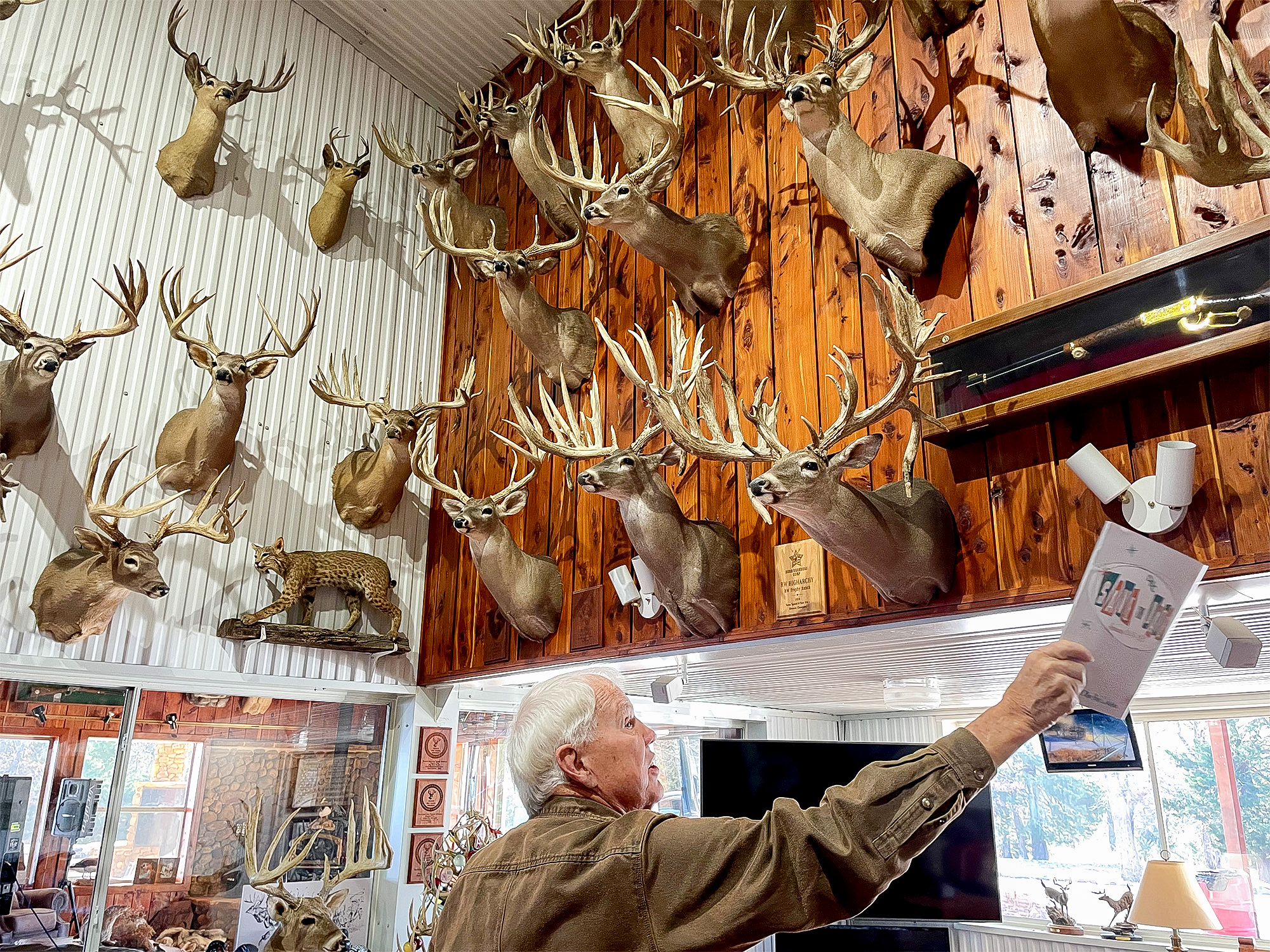
“Because of antlers like that right there,” he says, referring to a former Golden Buck winner named Monarch Superstar. “They cannot grow deer that big in the wild no matter what they do. They can’t stand that [someone] can go out and buy 200 acres without a deer on the place, and then I can sell you a pasture full of bucks and you can have paying hunters come out in no time. That burns their craw.”
Ripple Effects
Around the same time that RW Trophy Ranch recorded its first CWD-positive doe, Fred Gonzalez, another longtime breeder, had multiple deer test positive for the disease at his Uvalde County operation. In response to both incidents, TPWD issued an emergency order in June restricting the movement of deer from CWD-positive facilities. The agency also imposed stricter industry regulations that included mandatory postmortem testing for every pen-raised deer within seven days of death and mandatory live testing for any pen-raised deer before transporting it.
“Deer breeding itself is not the problem. It’s the movement of live deer between and among facilities,” says National Deer Association’s chief conservation officer Kip Adams, who emphasizes the impacts that CWD is having on the nation’s wild cervid populations. “It’s crystal clear in Texas that the movement of these animals is greatly elevating the spread of the disease in the state.”
To track potential dispersal of the disease, TPWD also conducted a 60-month trace of every deer that Williams and Gonzalez had bought or sold over the previous five years. This led to the discovery of CWD-positive deer at three other breeding facilities, all of which came from the Gonzalez herd. Two farms in Matagorda County and Mason County were depopulated, although postmortem testing revealed zero additional cases of CWD at either one. The third facility had a buck test positive but was able to avoid a similar fate (more on this later).
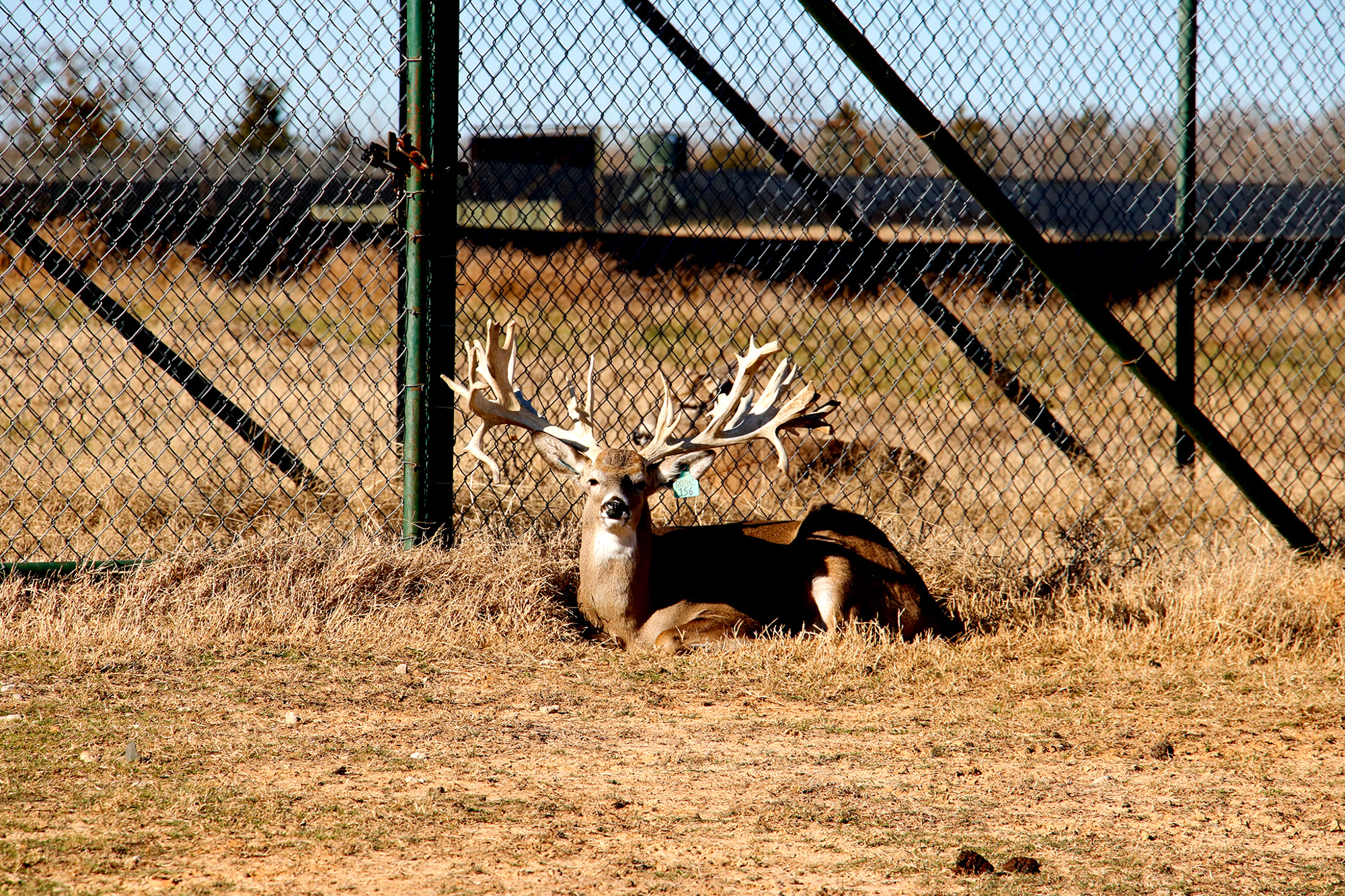
As the state imposed new regulations, the overall number of Texas deer breeders began to shrink. According to the Texas Deer Association, an industry group that supports the state’s deer breeders, there were an estimated 980 breeders in the state during the summer of 2021. Today that number is around 729.
“In 15 months, we’ve lost 251 breeders,” says TDA president John True, who is a partner in the breeding operation at Big Rack Ranch, a facility located near RW Trophy Ranch.
True explains that part of the reason for this shrinkage is the financial burden that deer breeders now carry. He says that since TPWD’s live-testing rule went into effect in June 2021, the industry has spent $15 million testing more than 50,000 animals—which makes up the majority of the roughly 65,000 deer currently living in breeding pens across the state.
Compare these numbers with the roughly 13,000 to 16,000 free-range deer that TPWD tests annually—out of a herd size of well over 5 million—and it’s obvious that state regulators will find CWD wherever they look for it the most, True says. In other words, the state agency is currently testing around .27 percent of its wild deer herd each year, while breeders have tested around 75 percent of their captive populations within the past two years.

“All we have to do is point out the truth,” he says. “Where else are they looking? Are they stopping movement of carcasses or requiring testing of [hunter-harvested] free-range deer? No. Not unless a deer breeder finds it and they draw a circle around them.”
TDA executive director Kevin Davis agrees that TPWD’s testing is unreasonably skewed toward deer breeders. He also says the ongoing debate over CWD is part of a longer-running philosophical battle with those who can’t stand the idea of artificially inseminating whitetails and raising them in pens. Davis points out that he supports the state’s efforts to combat CWD with regulations like mandatory seven-day postmortem testing of captive whitetails. But he adds that there are plenty of those who view deer breeders as a convenient scapegoat for the nationwide spread of the disease.
“What you’ll see is, it’s pretty easy for people to point their fingers at deer breeders as a proximate cause for CWD,” Davis says, pointing out that the disease has been discovered in other states where deer breeding isn’t allowed.
Read Next: If Chronic Wasting Disease Is Fatal, Why Aren’t We Finding CWD-Killed Deer in the Woods?
A career-TPWD employee who retired in 2020 as the assistant director of law enforcement, Davis tends to agree with Williams’ assertion that CWD might not as big a threat as some have made it out to be. And while he stops short of calling it a political disease, he says that, in his opinion, CWD has become “politicized” by special interest groups—some of whom might like to see deer breeding outlawed altogether.
“I think regulatory bodies are caught in the middle of this issue. TPWD has a duty to listen to these special interest groups, and what happens is that some of these groups are a lot louder, better organized, and stronger politically,” Davis says. “CWD has been politicized as a weapon, although it’s unreasonable to say that TPWD is the entity that is weaponizing it.”
Politics and finger-pointing aside, Davis and True both sympathize with Williams, who has essentially been given a death sentence on his life’s work. And looking back on the last couple of years in the industry, they say there has to be a way to manage CWD-infected breeder herds besides depopulation.
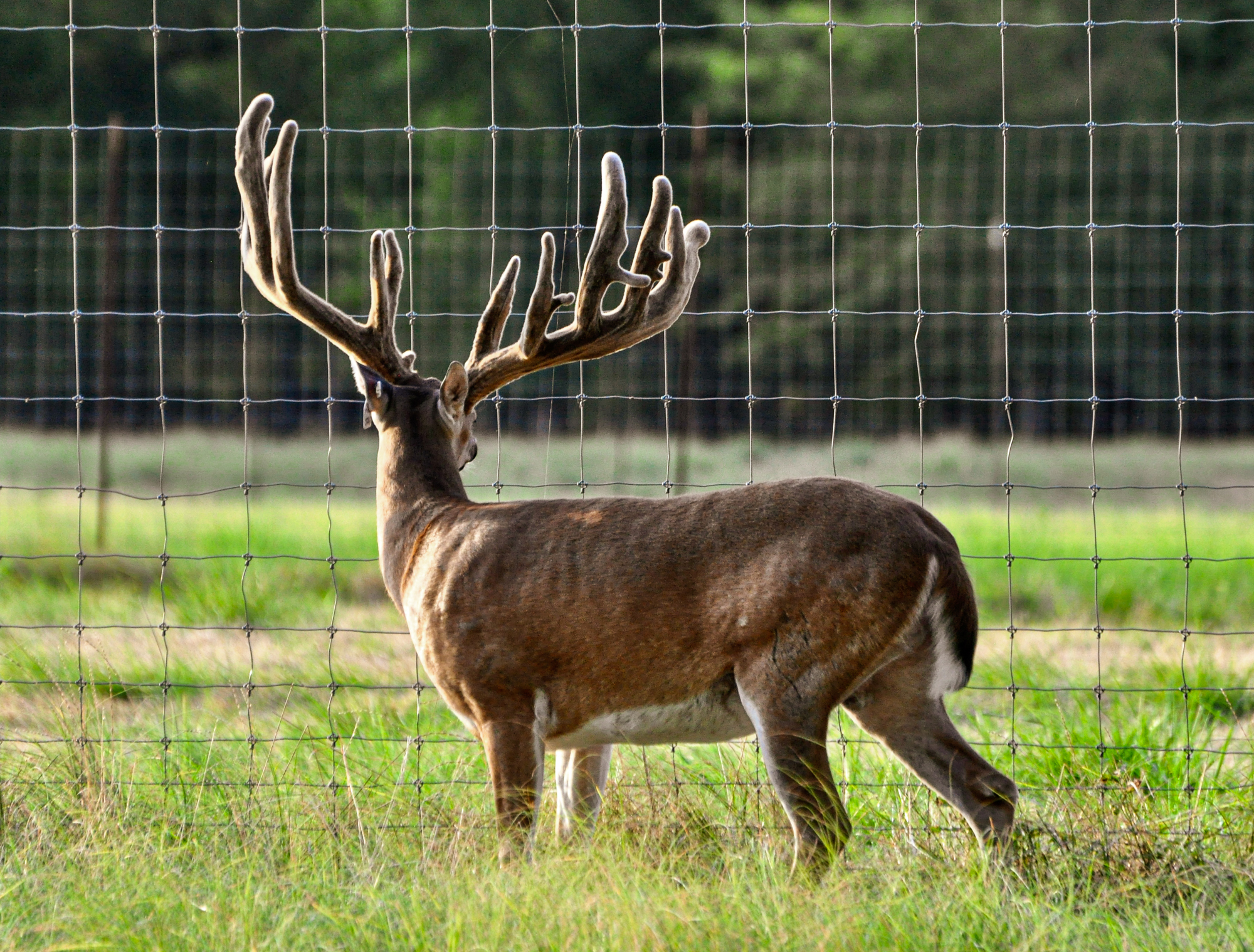
Opening Door Number Two
Jason Molitor feels the same way: All he really wanted to do was save his herd. The ranch manager at Ox Ranch Genetics in Uvalde County, Molitor says they ended up in TPWD’s crosshairs during the agency’s 60-month trace-out in 2021. A buck that he’d bought from Fred Gonzalez in 2019 ended up testing positive for CWD, which led to a state-ordered lockdown of the operation.
“Do I think this is a bad knee-jerk reaction that’s going way too far? Yeah,” Molitor says. But he’d seen what had happened to Williams and other breeders and he was willing to do pretty much anything to avoid it. Instead of fighting the state of Texas, he decided to work with it.
After consulting with Dr. Christopher Seabury, a genetic researcher and tenured professor at Texas A&M’s School of Veterinary Medicine, Molitor began damage control. He started by euthanizing and postmortem testing every buck that had ever shared a pen with the CWD-positive buck, along with every doe it had bred, and all the fawns it had sired. To his surprise, none of those samples came back positive for CWD. Molitor then live-tested every single one of the 800 or so deer that remained at the breeding facility. None of those deer tested positive, either.
Altogether, Molitor says, the facility has performed more than 2,500 tests (both live and postmortem) on deer since 2021, and they still haven’t found another positive case at Ox Ranch Genetics. Between the price of testing and lost revenue, he says the business has sacrificed millions of dollars over the last two hunting seasons. But there’s also a light at the end of the tunnel: If things continue without any more of his deer testing positive, TPWD will allow them to start releasing shooter bucks this fall.
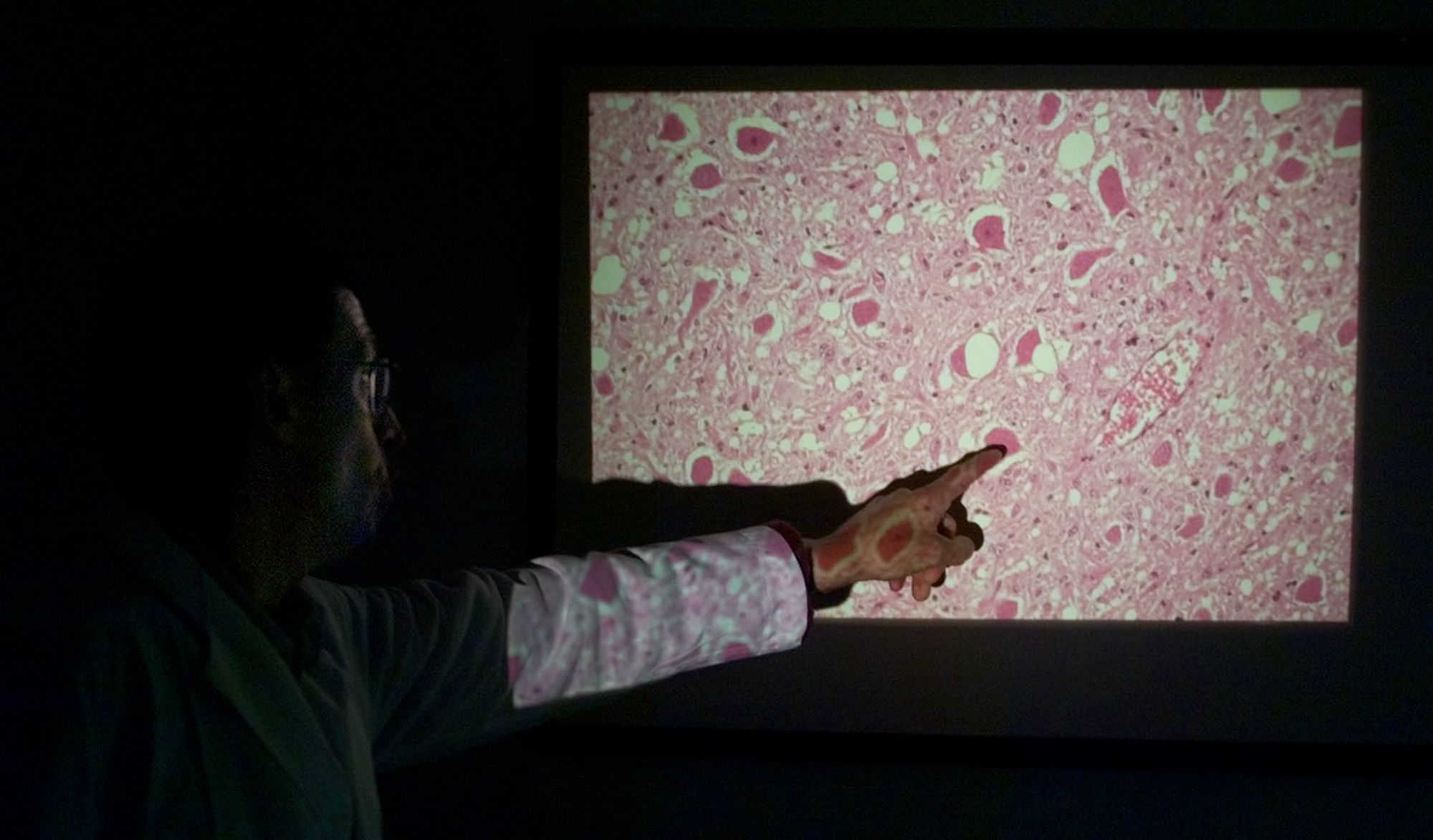
“I’ve taken a very different approach than Robert, and I’ve had a very different experience with TPWD,” Molitor says. “I still have doubts in my mind because I fully expected to find another case or two. But what I’m doing is hopefully giving other deer breeders a way to move forward in the future.”
True agrees, saying that Molitor’s proactive approach has essentially “created door number two” for the state’s deer breeders. He thinks the experiment could help the state write a new playbook in which the breeders become active participants in CWD research instead of being victims of the state’s management efforts. (Williams was originally given a similar opportunity to consult with Seabury, according to TPWD, but he declined.)
The ongoing genetic research at Ox Ranch Genetics has implications that go far beyond the state’s breeding pens. And if Williams represents the industry’s past, then the ideas being floated by Seabury could represent the industry’s future.
Breeding for “Durable” Deer
As an unpaid consultant for Ox Ranch Genetics, Seabury is overseeing a novel strategy in which breeders don’t select for antler mass, or width, or tine length, or any other quality that has traditionally guided the industry. Instead, with the help of USDA-APHIS research funding, Seabury and Molitor are attempting to selectively breed whitetails that are less susceptible to CWD.
Seabury was perfectly poised to step into the ring in 2021, when he was asked by various stakeholders to help develop a Herd Plan for Ox Ranch Genetics. For most of his career, he’s been researching the genetics of prion diseases like scrapie (a neurological disease affecting domestic sheep that is similar to CWD). He’s also led multiple national program analyses aimed at genetically improving production traits and animal health in livestock, and he’d already begun to take some of what he’d learned and apply that knowledge to CWD in whitetails.
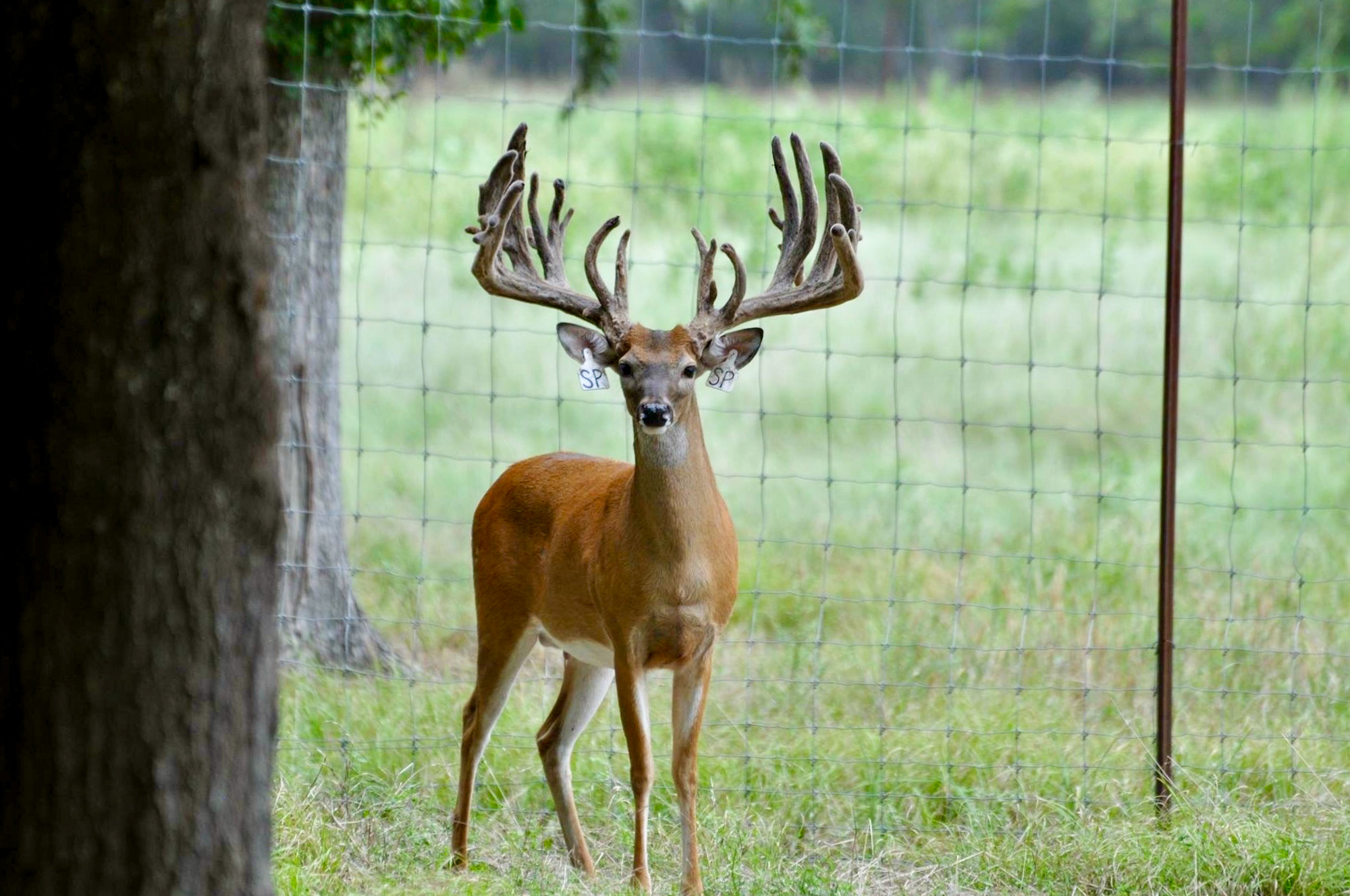
In a peer-reviewed study that Seabury published in April 2020, he concluded that a deer’s susceptibility to CWD is heritable, and that he could theoretically reduce the prevalence of CWD in a captive deer herd through accurate genetic predictions and selective breeding.
“I showed that I could predict with greater than 80 percent accuracy which animals would become CWD positive at known positive facilities based only on their genetic profiles,” Seabury explains. He says he’s followed up by conducting several blind validation tests with the USDA that have an average accuracy of 87 percent.
With Ox Ranch Genetics under the watchful eye of TPWD, Seabury took the opportunity to apply all this research to a real-world scenario. After Molitor culled and tested every one of the deer that had mingled with the CWD-positive buck, Seabury took the remaining 800 or so deer and ran individual genetic tests on each. He assigned every animal a numerical value based on how susceptible it was to CWD, which he refers to as its “genomically estimated breeding value,” or GEBV. He then sorted the herd into two categories: deer that were moderately to highly susceptible to CWD, and deer that were more “durable.” (Seabury doesn’t like the word “resistant” and says that a “spectrum of resistance” to CWD would be a more accurate way to look at it.)
Read Next: Here’s What Top Chronic Wasting Disease Researchers Can’t Say on the Record
“We know what deer are most susceptible, and that’s really the key, because if you can identify the animals that are moderately to highly susceptible and remove them from the breeding population, you will automatically reduce the risk for CWD,” Seabury says. “The ones that remain are more durable and can likely tolerate low levels of exposure without becoming infected.”
So, after Seabury assigned a GEBV to each of the remaining pen-raised deer at Ox Ranch Genetics, Molitor culled the ones that were identified as moderately to highly susceptible. He was left with a herd of around 400 whitetails. The facility is now in a unique position to rebuild its herd and breed a new line of deer that is more durable in the face of CWD than its predecessors.
This ongoing experiment could represent a giant step forward in how we research and manage CWD in Texas. Is it going to solve the bigger problem facing the state’s wild deer? Probably not, according to Adams, who would rather see more of that energy going into the development of better live animal tests.
“I think there are other things that would better help wild deer, and this genetic work does far more to benefit captive facilities than wild deer herds,” Adams says. “But I do think they provide a good laboratory for some studies, and I think it’s good to take advantage of that and learn everything we can about this disease.”

Still, this can only happen if the state’s regulatory agencies agree to work with deer breeders. And those breeders will have to make concessions by using their facilities as working laboratories. It will also require many Texans to shed their preconceived notions about deer breeding and consider these unique facilities as the beacons of research they could someday represent.
“You have a controlled environment with large numbers of deer, and we can test their genetics,” Seabury explains. “They also have mandatory postmortem testing, which doesn’t happen in the wild, and mandatory live testing before movement, which doesn’t happen in the wild, either. Our understanding of CWD is going to come from breeder deer. Without them, we would all just be observers, watching events unfold in the wild without a plan.”
Williams remains a skeptic. Regardless of how many of his deer test positive for CWD, he still believes that state regulations pose a greater risk to his livelihood than some neurological disease we have yet to fully understand. He says if TPWD would just allow him to release all his pen-raised deer onto the high-fenced property for hunters to shoot, he’d give up his breeding license and walk away from the business. Until that day comes, his legacy lives on in the herd of trophy bucks still residing on the ranch.
Read more OL+ stories.
